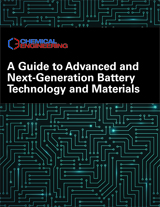Description
Valves are ubiquitous throughout all chemical process industries (CPI) operations, and constant engineering attention is required to ensure proper specification and optimal operation. The selection of engineering articles in this Chemical Engineering guidebook provide useful recommendations to support the selection and use of control valves, pressure-relief valves and emergency-shutdown valves to improve the overall operation, economics and safety of the process or facility.
The guidebook focuses on control and communications strategies to optimize valve operation, and proper selection of positioners to improve valve operation. Understand special challenges that arise during equipment selection and commissioning for hygienic operations and discover tips for managing fugitive emissions.
Emphasis is placed on equipment selection, operation and optimization for steam-production systems, and troubleshooting of distillation systems and large-scale fermentation processes. Practical guidance is also provided on how to manage specific issues that can arise during commissioning and startup of CPI facilities.
Delivered in a PDF format, 139 pages.
Articles Include:
Control Valves: An Evolution In Design
• Understanding the design features of globe-style control valves can help in selection for specific applications
Avoiding Pressure Relief Problems
Control Valve Position Sensors
Managing Pressure while Pigging an Oil Pipeline
• Pressure control valves can manage pressure in oil pipelines, but pigging
the line presents a challenge
Plant Revamps and Turnarounds: Some Lessons Learned
• Although time is always precious, taking shortcuts and skipping standard
procedures can be costly
Sizing Calculations for Pressure-Relief Valves
• A universal mass-flux equation can improve sizing calculations for pressure-relief valves with non-ideal fluids
The Relationship Between Materials Selection and Machining Processes
• An awareness of the impact of materials selection on the machining processes for small, complex components can affect overall end-product quality and costs
Seven Tools for Project Success
• Having the right tools is essential for success. These tools are of use to both novice and experienced project managers
An Investigation of Premature Flooding in a Distillation Column
• Surprising observations regarding flooding in the upper fractionation trays of an atmospheric crude-petroleum distillation column are investigated
Rotary Valves in Pneumatic Conveying Systems
• Because of their wide application in pneumatic conveying systems, it is important to understand how rotary valves are designed and used
Steam Balancing: The First Step in Steam Optimization
• The ability to achieve an optimal steam balance can help to improve the overall thermal cycle efficiency of any steam-production system
Hygienic Process Equipment Fabrication
Optimizing Pressure Relief Systems
• Alternative designs for pressure relief systems may offer investment cost savings
Connecting Operations Personnel to Reliability Efforts
• Seven methodologies are described to help operations staff take greater ownership of asset performance
Performance Trends of Top Performers in the CPI
• Focusing on a ‘reliability culture,’ mechanical availability and optimum costs leads to top performance
Large-Scale Fermentation Systems: Hygienic Design Principles
• Follow these tips to optimize systems that use microbial fermentation to produce biochemicals and biopharmaceuticals
Communication Technologies for Throttling Valve Control
• Closed-loop control performance depends on the dynamic response of the controller, valve, measurement and process. Can wireless compete with conventional networks?
Considering Fugitive Emissions During the Conceptual Design Stage
• The ability to reduce fugitive emissions through the use of strategic design modifications not only protects workers and the environment, but reduces losses of valuable process materials
Emergency Shutdown Valves: A Functional Safety Approach to Selection
• The relationship between valve selection and safety certification still causes confusion. A focus on functional safety can help to elucidate
Commissioning and Startup: Increase Certainty Through Advanced Planning
• Taking commissioning and startup into consideration during the early design phase can result in more predictable project schedules and more robust equipment designs
Using Installed Gain to Improve Valve Selection
• Among other things, this analysis is helpful in comparing one valve candidate with another and in exposing over- and under-sized valves
Improving Control Valve Performance
• The control valve is a focal point for improvements to both process performance and economics
Emissions Regulations and Control
• Harnessing new technologies for best practices in pollution control could
lead to a more ideal framework of policies and programs
Feeder Design for Solids Handling
• Processes involving the movement of bulk solid materials require careful consideration of the feeder equipment design, including how the feeders work with various bins and hoppers
Valves: Emissions Standards and Current Practices
• New industry standards aimed at reducing fugitive emissions have necessitated updates to valve-testing procedures and a renewed focus on high-performance sealing and packing technologies
Gas Detection as a Risk Mitigation Technique
• There are many differences between gas detection systems used for process monitoring and those used for protecting the safety of personnel




